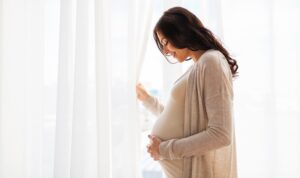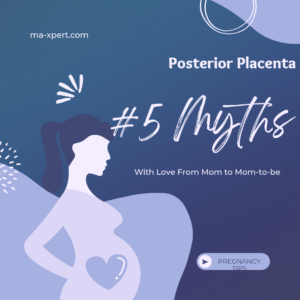“Hello Mommies, welcome to my world ‘Ma-xpert.’ Here, My aim is to share all the important things that I believe new moms should know about Placenta, Posterior Placenta meaning and Myths about Posterior Placenta because I’ve been foolish enough to believe in all those myths too.

Table of Contents
TogglePosterior Placenta Means & Myths :
The fact is Posterior placenta has nothing related to gender of baby. Being a mother of two beautiful daughters, my third pregnancy put a lot of pressure on me to have a boy. Throughout my nine months of pregnancy, I’ve only searched on Google for signs indicating Posterior Placenta and whether it’s a boy or a girl.
Firstly, the pressure and stress of wanting a particular gender are not at all healthy for our pregnant body and mind. We should leave all of this about placenta and posterior Placenta theory to fate and only pray for a healthy baby, regardless of gender.
Posterior Placenta Means Boy or Girl :
Gender has nothing to do with posterior Placenta and stress play a crucial role, especially from husbands. Whether you have three daughters, one should consider their daughters as God’s gift and not pressure the mother for a son. I was very fortunate in this situation as neither my in-laws nor my husband imposed this pressure on me.

Now, let’s talk about the reality of the placenta. The placenta is just an organ that delivers essential nutrients and oxygen to the unborn baby through the umbilical cord. There are three positions of the placenta: Anterior Placenta, Posterior Placenta, and Low Lying Placenta.
Anterior Placenta: The actual position of the placenta is determined by ultrasound. Anterior placenta means the placenta is towards the front wall of the uterus.
Posterior Placenta: The actual position of the posterior placenta is also known from the sonography report. Posterior placenta means the placenta is attached to the back wall of the uterus.
Low Lying Placenta: In the early days of pregnancy, the placenta is positioned on the front or back side of the uterus. As the uterus size increases after 20 weeks, the placenta shifts to the lower side of the uterus.
Myth #1
It’s believed by some that if the placenta is posterior, it indicates the baby’s gender, meaning if the placenta is posterior, the baby will be a boy. However, there is no scientific evidence for this.
Myth #2
Some believe that babies with a posterior placenta show more active movements, but this isn’t true. Every baby needs regular movements, and if movements are reduced, it’s essential to consult a doctor rather than assuming it’s due to an anterior placenta.
Myth #3
Some claim that babies with a posterior placenta tend to have preterm deliveries, but there is no proof from any national or international pediatric doctor, making it a myth.
Myth #4
It’s a common belief that this position is best for the baby as it provides more space for movement in the womb. However, after the growth phase, baby movements decrease as there is less space in the womb.
Myth #5
There’s a misconception that having a posterior placenta increases the chances of a vaginal delivery. While a normal delivery is possible if the placenta does not cover the cervix, a c-section is safer otherwise.

There shouldn’t be any response to any myth during pregnancy, especially concerning the baby’s gender. It’s important to stay as happy as possible during pregnancy and follow a good diet for the physical and mental health of both the mother and the baby.” Being a mother of three kids I would always suggest all mom’s out there to enjoy fully these days as it’s not going to come back again in life to feel a human inside us..
